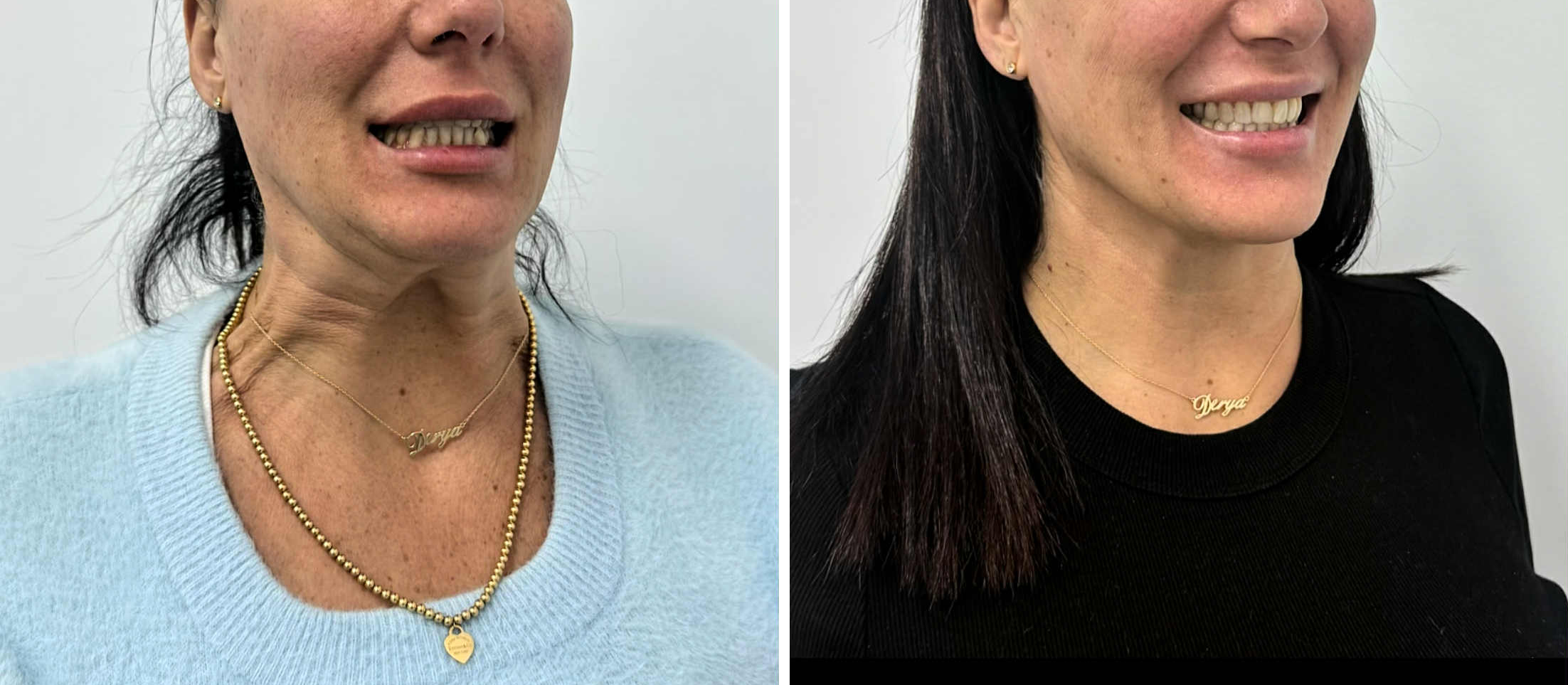What Are Platysmal Neck Bands?
A Patient’s Guide to Understanding Those Vertical Lines on Your Neck
Platysmal bands are vertical lines or cords that appear on the neck. They usually start just below the jaw and run down toward the collarbone. These bands become more visible when you tighten your neck muscles, like when you make a grimace or pull your lower face downward.
They’re caused by changes in a thin muscle under your neck skin called the platysma.
As the platysma muscle weakens and separates into bands, it can also pull on the overlying skin, contributing to a sagging or loose appearance in the neck. When this is combined with aging skin and reduced collagen, the result may be what some people call a "turkey neck" or neck laxity.
So while platysmal bands themselves are not harmful, they can play a role in the overall aged appearance of the neck.
The platysma muscle is soft and flat, and it stretches from your jawline to your chest. When you’re young, this muscle lies smooth and tight. But as you age, several things happen:
The skin gets thinner and loses elasticity
The muscle becomes looser and may split
Fat in the neck area decreases, making the muscle more visible
These changes can cause the platysma to show through the skin as visible vertical lines.
Treatments that can help reduce how noticeable they are. These include but not limited to:
Wrinkle Treatment (Neuromodulators)
Tiny injections into the neck muscle can relax the muscle and make the bands less visible.
Results usually last 3 to 6 months.
This is a non-surgical, quick procedure.
Surgery (Platysmaplasty or Neck Lift)
A surgeon can tighten the muscle or remove extra skin.
This is a longer-lasting option, but it involves more recovery time.
Non-Surgical Skin Tightening
Treatments like ultrasound, radiofrequency, or laser can help firm the skin and improve the look of mild platysmal bands.
These are less invasive than surgery and often require multiple sessions.
It’s important to understand that every patient’s experience with facial or neck aging is unique. The appearance of sagging skin can result from a combination of factors, including skin laxity, muscle changes, fat distribution, and even bone structure. Because no two faces age exactly the same way, treatment outcomes can vary and carry some level of risk. That’s why a personalised consultation is essential. During this visit, we can assess your anatomy, discuss your concerns, and recommend the approach that best fits your individual needs and goals.


